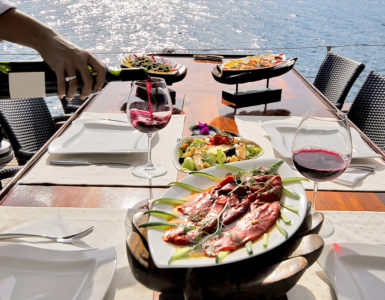Whether you’re traveling to Ethiopia or want to experience Ethiopian cuisine from the comfort of your own city, it’s a culinary adventure you absolutely must try at least once. Fair warning, though, you will undoubtedly want to go back and try it again. And again.
To the uncultured, Ethiopian dining can be rather intimidating. Luckily, servers are almost always happy to guide you through the menu. But in this article, I’ll give you a head start and explain some of the names of dishes and how to eat your meal.
Injera is the foundation of Ethiopian cuisine
We must start with the item without which you couldn’t eat any Ethiopian meal: injera! It’s a flatbread made from teff, a type of grass. It’s technically not a bread, though it loosely functions as one.
Injera is fermented with water for a couple of days before it is baked. It’s large in radius, has a crepe-like texture, and a somewhat sour taste. Not only is it one of the healthiest types of “bread” in the world, but it’s also delicious!
Ethiopian eats
Typical Ethiopian dinner menus will offer the option to either order a recommended combination meal, or a la carte style dishes. Either way, you will be served a plate with your choices sitting in neat little piles atop injera rolled out into the size of a medium pizza.
Here are some common dishes you might find on an Ethiopian menu:
- Gomen: cooked collard greens with garlic, onions and ginger
- Tibs Wat: beef cooked in a traditional Ethiopian Berbere sauce
- Key Sir Alicha: carrots, beets and potatoes cooked thoroughly
- Yater Kik Alicha: cooked yellow split peas with peppers, onions and herbs
- Shiro: mildly spiced ground chickpeas cooked with chopped onions
- Ye Siga Alicha: beef stew nicely seasoned with onions, curry and peppers
- Fossolia: carrots and string beans cooked and seasoned in garlic sauce
How to eat your meal
One of the most confusing aspects of Ethiopian dining for newcomers is the way you’re expected to eat your meal. Instead of silverware, you will have a basket of rolled injera. That’s right, the injera is your fork and spoon.
Simply break off a small piece of injera, roughly the size of your palm, and use it to grab one or more dishes. Then eat! There’s nothing more to it.












Add comment